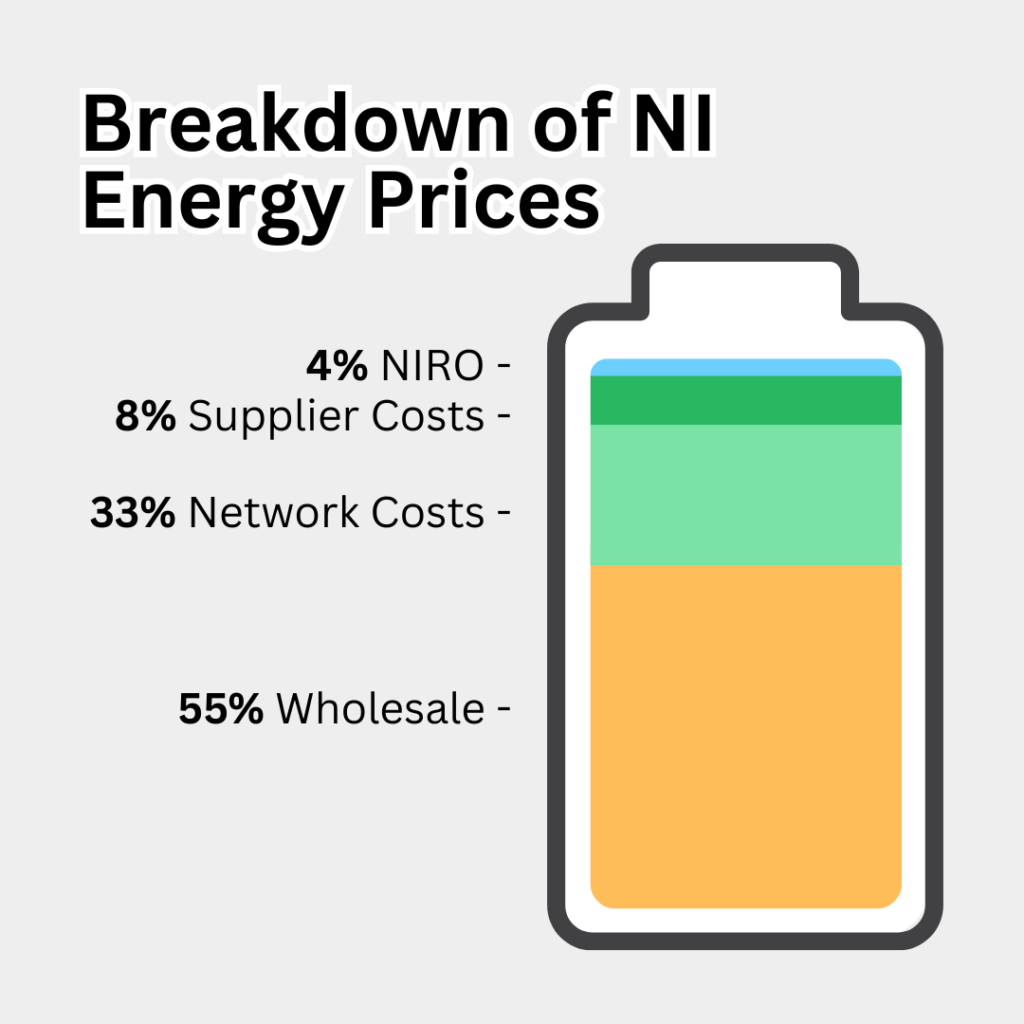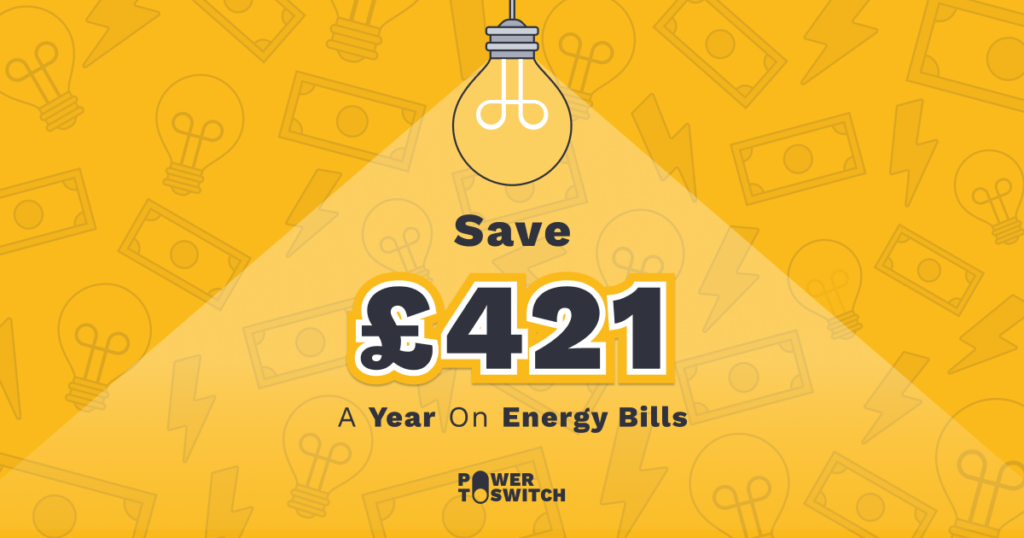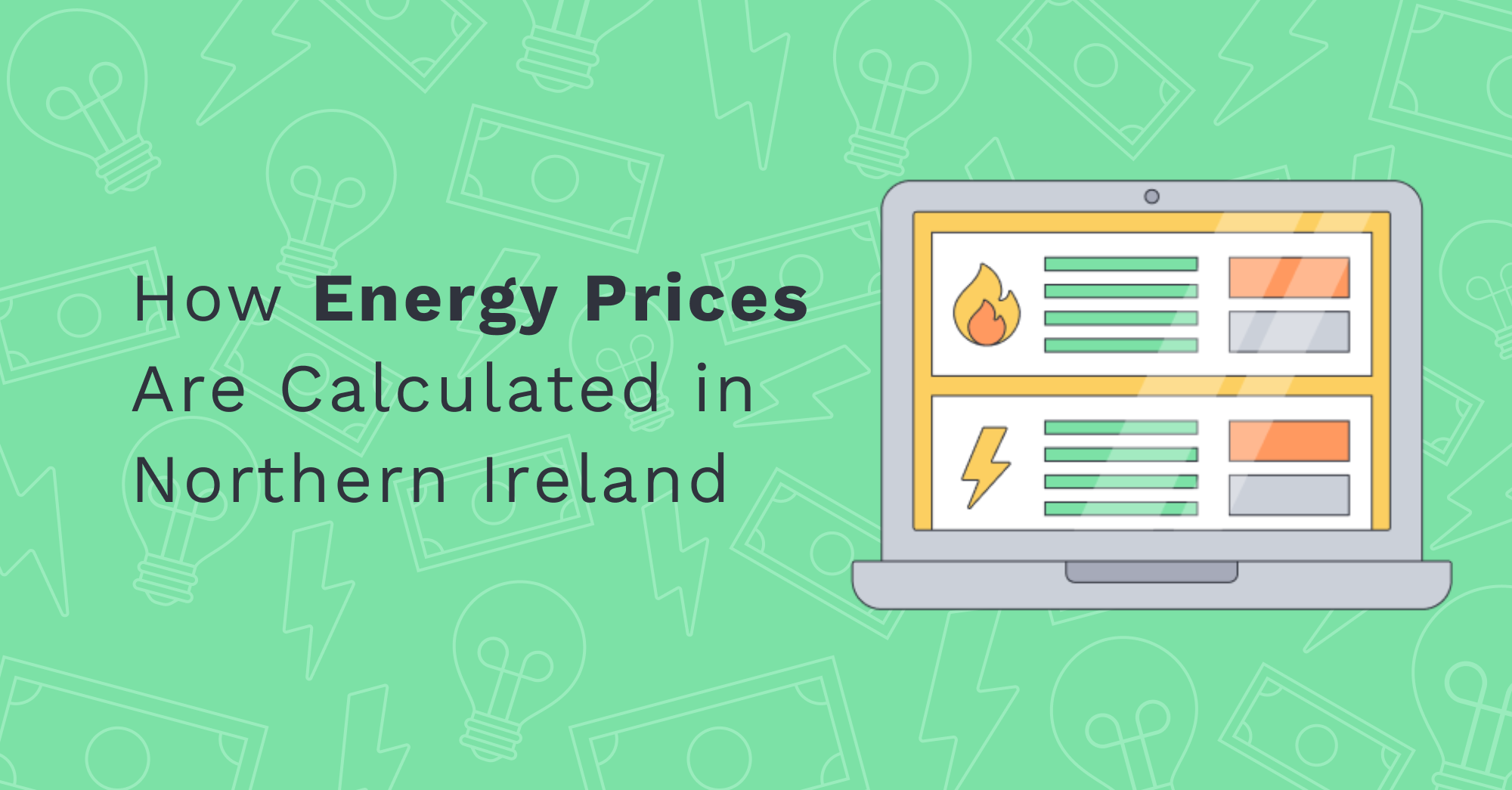One of the most common questions we get asked is: “How are electricity prices actually worked out?” It’s a good question – and not always a straightforward one to answer.
That’s why we’ve put together this handy guide to help explain how electricity prices are calculated in Northern Ireland, what causes them to change, and how you can stay in control.
Let’s break it down.
First: Who Sets the Price?
Northern Ireland has its own energy market distinct from the rest of the UK and the Republic of Ireland. The energy market in Northern Ireland is regulated by the Utility Regulator.
And while all suppliers compete for your business, Power NI as the largest supplier (supplying around 6 in 10 homes) is ‘price’ regulated. This means their prices are reviewed and approved by the Utility Regulator on a regular basis.
Other suppliers, including Budget Energy, Click Energy, Share Energy and SSE Airtricity are not price regulated – they can set their own tariffs and are free to compete with all suppliers. Because Power NI’s prices are regulated, they’re often seen as the ‘price to beat’ – giving other suppliers a target to compete against with better deals or added incentives, helping to create more choice in the market.
Regulated tariffs are reviewed (usually twice a year) by the Utility Regulator to ensure they reflect actual costs. Other suppliers will often adjust prices more frequently in response to market conditions.
What Makes Up Your Energy Price?
Your energy bill isn’t just the cost of gas or electricity itself. It’s made up of a few key parts:

1. Wholesale Energy Costs (55%)
This is the price your supplier pays to buy energy from wholesale markets before it ever reaches your home. Wholesale energy costs make up the biggest chunk of your bill accounting for around 55% of the final cost. The cost of wholesale energy can change quickly due to things like global gas prices, extreme weather, or political events. In recent years, prices have swung sharply and remain relatively high. Wholesale costs are the biggest driver of price changes, and they can change fast.
2. Network Charges and Levies (33%)
Around a third of your energy bill (33%) pays for the infrastructure that delivers energy to your home – the power lines, pylons and maintenance. It also helps pay the cost of running the electricity system. These charges are built into your bill and apply to everyone, no matter who your supplier is.
3. Supplier Costs (8%)
Approximately 8% of your bill is to cover supplier costs, including profit. This covers all their day-to-day operational costs including customer service, billing and IT systems. Suppliers also have to build in a margin to make a profit.
As a price-regulated supplier, Power NI has its profit margin capped by the Utility Regulator at 2.2%. In a competitive market, margins across suppliers will vary which is why prices can differ so much between suppliers.
4. NIRO (4%)
The Northern Ireland Renewables Obligation (NIRO) was set up to support renewable electricity projects. While it’s now closed to new projects, households still pay around 4% of their bill to cover the cost of existing projects.
It’s Confusing: Energy Price Cap v Regulated Tariff
The Energy Price Cap does not apply to NI (only to England, Scotland and Wales).
The Ofgem energy price cap (used in Great Britain) and the regulated tariff approach by the Utility Regulator (UR) in Northern Ireland are both designed to protect consumers from paying too much for their energy – but they work differently.
In GB, Ofgem sets a maximum price per unit that suppliers can charge customers on standard or default tariffs. All suppliers must follow this cap. In Northern Ireland, instead of a fixed price cap, the Utility Regulator approves the tariff for Power NI making sure prices reflect actual costs. Other electricity suppliers in NI can set their own rates.
So, while both systems aim to keep prices fair, Ofgem limits prices across the board for all suppliers, while NIAUR regulates the price of one supplier, Power NI (who supplies around 60% of homes).
Why Do Prices Keep Changing?
The biggest factor that impacts on energy prices is the wholesale cost of electricity or gas. These costs can rise or fall quickly due to things like global fuel shortages, extreme weather, or geopolitical tensions – and suppliers usually pass these changes on (quickly) to customers.
How suppliers buy from wholesale markets also affects what you pay. Most suppliers use a mix of strategies to manage wholesale costs.
They often hedge – locking in prices in advance to protect against future spikes whilst also buying some energy closer to the time it’s needed to respond to changes in demand. Getting this balance right can help suppliers stay competitive but is not always easy in a volatile market.
Other parts of your bill like network charges, levies, and policy costs also affect the price you pay, but these tend to change less often and are less influenced by global events. Regulated suppliers go through a formal review process, usually every 6 months. Competitive suppliers may adjust prices more frequently – which is why shopping around regularly is so important.
How Power to Switch Helps
Power to Switch is about making energy decisions simple. You don’t need to be an expert or spend hours comparing bills – just pop in a few details, like your current supplier and how much you spend or use, and we’ll do the rest.
What you’ll see in the results:
- A list of all electricity and gas tariff available in Northern Ireland
- All bill pay and keypad deals
- Estimated annual costs based on your usage
- How much you could save by switching
You can filter by things like green energy options, paperless billing discounts, and more. It’s free, easy to use, and we never take payment from suppliers to influence the results.

When Should You Check Prices?
We recommend checking deals on a regular basis but especially if:
- You have never switched or it’s been a while (+1 Year)
- Your discount term has just ended
- You’ve received a price increase notice
- Your household usage has changed (for example, more people working from home)
Our customers even save an average of £421 from their annual energy bill just by switching deals.
We know energy pricing can be a bit of a minefield – but we’re here to help. At Power to Switch, we believe you should always know what you’re paying, and why. And if there’s a better deal out there, we want to help you find it.
Prices may go up and down – but your power to choose? That stays constant.
Ready to compare? Use our comparison tool and see how much you could save today.





